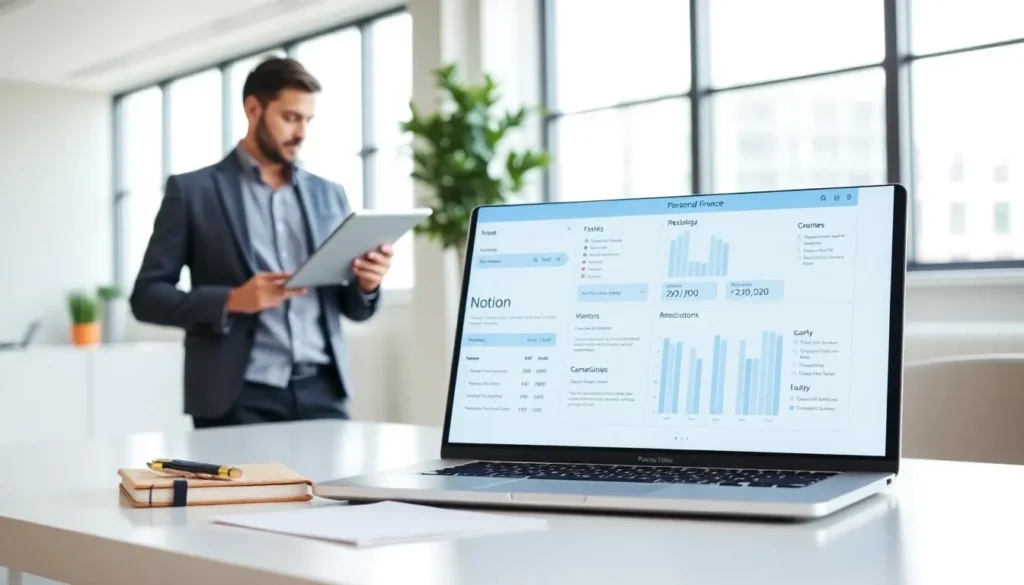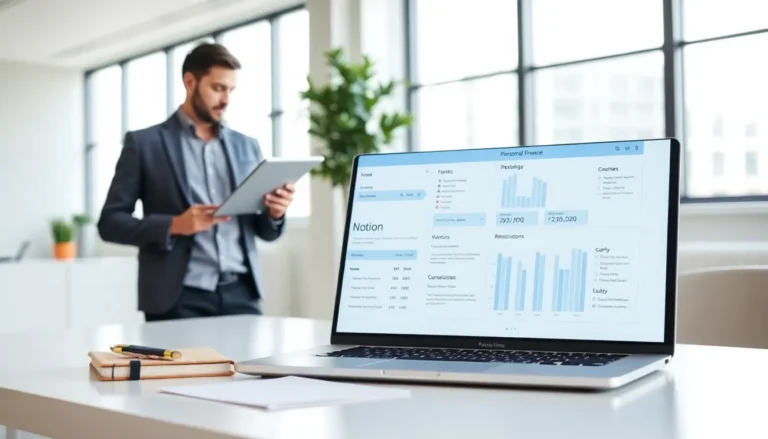Table of Contents
ToggleManaging personal finances can feel like trying to solve a Rubik’s Cube, frustrating and confusing, with pieces that just don’t seem to fit. But fear not. With the Notion personal finance template, you can turn financial confusion into clarity. Designed to help you budget, track expenses, and set financial goals, this tool can revolutionize the way you manage your money, without the headache. And who says finance can’t be fun? Let’s jump into the world of Notion and discover how this template can help anyone take control of their finances while maybe cracking a smile or two along the way.
Understanding Notion for Personal Finance

Notion is an all-in-one workspace that combines notes, databases, and tasks. For personal finance management, this means versatility. Users can create customized setups, making financial tracking as simple as pie. Imagine being able to keep all your financial records in one place, with everything linked and easy to navigate. This adaptability is essential for anyone looking to streamline their financial management.
Benefits of Using a Notion Template for Finance
Using a Notion template for finance comes with a treasure trove of benefits. First, it offers an organized approach to tracking income and expenses. Users can categorize their spending habits, making it easier to identify areas for improvement. Second, the visual appeal keeps users engaged. With customizable layouts and aesthetic freedom, managing money doesn’t have to be mundane. Also, Notion allows for easy collaboration, meaning couples or roommates can work together on shared finances. No more hiding from each other’s spending. Plus, templates can be created once and reused endlessly, making it a sustainable choice for financial management.
Key Features of an Ideal Personal Finance Template
An ideal personal finance template in Notion should encompass several key features. First and foremost, expense tracking is crucial: users need a section dedicated to logging daily spending. Next, a budgeting calculator can help users allocate their finances effectively. Customizable financial goals sections allow users to set targets, be it saving for a vacation or paying off debt. Also, a summary dashboard displaying overall financial health can offer valuable insights. Finally, integration with calendars for bill reminders ensures that important dates never slip through the cracks.
How to Set Up Your Notion Personal Finance Template
Setting up your Notion personal finance template might seem daunting, but it’s quite straightforward. Start by identifying your financial categories, such as housing, groceries, and entertainment. From there, create a dedicated page in Notion where these categories can live. You can add tables for tracking expenses and income, customizing each column to reflect the data you care about.
Customizing Your Template for Optimal Use
Customization is key. Use Notion’s endless personalization options to make the template work for you. Change color codes for different spending categories, embed graphs for visual analysis, and add reminders for bill payments. The goal is to make it feel intuitive and uniquely yours. A well-organized template will encourage consistent usage, ensuring that financial tracking becomes second nature.
Integrating Other Tools with Notion
One of Notion’s strongest features is its ability to integrate with other tools. For personal finance, users can link their bank accounts using services like Plaid or integrate Google Sheets for enhanced data analysis. Need to know how much you spent last month? Link your spending data directly. Besides, connecting other productivity tools helps users stay on top of their finances without a hitch, ensuring they have the right data at their fingertips.
Tips for Effective Personal Finance Management
Effective personal finance management isn’t just about using the right tools, it’s about developing good habits. Start by reviewing your financial data regularly: make it a part of your weekly routine. Set aside time weekly to analyze your spending and adjust your budget as necessary. Consider automating savings to help reach your financial goals quicker. Remember, consistency is key. Over time, small adjustments can lead to big results.








